Saturday, January 7, 2017
Podcast: Every Cocktail Napkin Has an Alternative Alignment
Monday, October 3, 2016
Podcast: Shane Phillips on LA Housing
Wednesday, March 16, 2016
Podcast: The Year in Transit Starts with Yonah Freemark
Friday, February 19, 2016
Podcast: A Car Free Travel Guide to Los Angeles
Wednesday, November 11, 2015
Most Read from November 10th

- "Dallas doesn’t principally have a parking problem. It has a downtown Dallas problem"
- LA City Council will have to revote on mobility plan, critics hope it's their chance.
- Maybe Lyft only wants to be friends with rail lines, not buses? That's what the image says to me
Bonus Quote
"This experience has let me know that architecture can speak to and touch people and change things, regardless of what academia or what the old guard may want you to believe"
- Germane Barnes
Tuesday, October 6, 2015
Most Read: 82 Foot Buses for the Orange Line
Metro 65 Foot Bus via Flickr User L.A. Urban Soul
In doing some research looking for the bills that allowed the original change from 60 to 65 feet, I found a few strange things including no record of a bill passing that would allow for 65 foot buses. SB 650, which was the original legislation, reached a third reading and was vetoed by then Governor Schwarzenegger. But by veto time, the subject of 650 had changed.
The California Vehicle Code still says that articulate buses have a limit of 60 feet but according to the MTA, "Metro has been granted an exemption from Caltrans to permit operation of the 65-foot vehicle exclusively on the Orange Line transitway."
So they finally passed the bill to make 82 feet totally legal, without exemptions, and with 17 extra feet.
This bill would authorize the Los Angeles County Metropolitan Transportation Authority to operate articulated buses that do not exceed a length of 82 feet on the route designated as the Orange Line in the County of Los Angeles. The bill would require the authority to establish a route review committee prior to operation of those buses, as specified...The question is, why wasn't it legal before? And why an arbitrary length such as 82 feet? Well 82 feet equals 25 meters. So it seems as if it's cluing off of international standards. But then there are 30 meter (over 100 foot) buses used in Dresden, so I'm not sure why not go all out if they might be available.
Auto Tram Extra Grand Used in Dresden
We've seen longer bi-articulated buses in action in places such as Curitiba on dedicated right of ways and in European cities but why haven't they found their way to the United States? If I were to venture a first guess, it would be that we don't have many lines that necessitate the length. The few that do are on busy city streets where turning and visibility with much smaller vehicles becomes an issue.
Research in the US (TCRP 75) focused on higher capacity buses found that articulated buses or "artics" were good at some tasks but not others. The one task that agencies said overwhelmingly that standard articulated buses in their fleets were better was turning radius. They found however that the buses were underpowered and poor at climbing hills and fuel economy. The under-powering in one instance led to longer running times on corridors. Another issue brought up was maintenance, with managers saying that another axle meant more repairs and less reliability.
However a case study of King County Metro in 2007 found that the buses were more cost effective per seat mile and had less maintenance issues than their 40 foot siblings.
Safety issues reported were instances where older articulated ends had a propensity to slide out wide on turns in addition to difficulty seeing boarding passengers towards the rear of the vehicle.
It was hard to find information on buses longer than 60 feet or even safety discussions, however in TCRP 90 it was noted that articulated buses have larger turning radii and overhang. There also is a need to have longer bulb outs and stops to accommodate longer vehicles, which of course would increase costs. Maintenance facilities need to be set up for longer buses as well and I've heard that if maintenance managers had their way, they would get rid of trains and artics and just run 40 foot buses everywhere. Unfortunately for many of them they have customers.
I know this isn't a completely exhaustive look at longer buses but I was curious about them, after making claims without researching before that it was a safety issue that was keeping longer vehicles off the roads. It still feels like this would be an issue when operating along side autos, bikes, and especially pedestrians, but for now, this is what I know.
I'm interested to see how LACMTA will implement this new rule on the Orange Line, and whether it will lead to increased ridership, as well as increased fighting on the bus vs rail argument. As a frequent bus and train rider here in San Francisco, I will say I will always choose the rail route if possible. But we can discuss preferences at another date too....
Tuesday, August 4, 2015
Podcast: Tanya Snyder Joins to Talk Earthquakes and City Kids, Not In That Order
Thursday, February 3, 2011
Thursday Night Notes
If road projects like this one had to go through new starts they would never get built. This road like all other ring roads is about development. But you're not allowed to build a transit line and let ridership grow. It has to be on target! Double standard.
~~~
Ed Glaeser floats the "We should invest in NE Corridor for HSR only" meme that's going around. See post below. Also, how can you say we shouldn't be building major city pairs for places that do already have the density? I never understand the idea that we should just wait until conditions are just right everywhere. That's just a stall tactic.
~~~
If transit were all designed to look this good maybe more people would ride.
~~~
THIS is the reason for my skeptical nature on BRT. People in Berkley or in West LA are going to screw the whole plan to make it worthless. You spent all that time to get what? A red bus that skips a few stops?
Tuesday, July 13, 2010
Guest post: Vegas Real Estate Explains it All?
It's funny. The links to this article from Kotkin (which also made it into the Wall Street Journal) suggested that it was about demographic trends and would include lots of evidence to show that people aren't moving to central cities anymore. But then I read the article, and the whole thing is really just a cautionary tale to the commercial real estate industry. Kotkin asserts that alleged trend of folks moving back into cities seems to be reversing itself. Now, maybe this is true. Maybe that's what the population data show. And this is an important conversation to have – it's not at all clear to me that cities are thinking rigorously enough about how best to grow, and who is likely to show up. We won't find any useful answers from Kotkin, though, who bizarrely bases the bulk his argument on price movements:
Housing prices in and around the nation's urban cores is (sic) clear evidence that the back-to-the-city movement is wishful thinking. … Condos in particular are a bellwether: Downtown areas, stuffed with new condos, have suffered some of the worst housing busts in the nation.
He then engages in some brazen cherry picking, discussing house-price declines in Miami, Vegas, and Los Angeles, and only focusing on new condo construction as opposed to the market at large. Beyond the fact that these aren’t exactly beacons of walkable urbanism, using these cities in particular to make a point is just misleading when you look at how their markets have been behaving:

These lines in the chart are the Case-Shiller Home Price Indices for the metros that Kotkin cites, along with the 20-city composite in purple (which isn’t exactly the same as a national average, but is a reasonable proxy). As you can see, LA, Vegas, and Miami all had much bigger bubbles and much bigger crashes than the nation as a whole. This means two things: 1. these are terrible examples to use for the nation, since they are where much of the bust has been concentrated, and 2. of course the market activity in these places looks terrible, and of course it looks really bad in their downtowns, which is where much of the growth had been taking place. You could make the exact opposite argument by choosing the Bay Area as your focus, and comparing price moves in exurbs like Stockton and Tracy to those in San Francisco. The truth is that this is just a nonsensical way to analyze a national trend since different metro areas have had very different experiences during the housing bust. The numbers he cites aren’t necessarily wrong, but they prove absolutely nothing, other than that people were making some crazy moves in Miami and Vegas during the housing boom.
Wednesday, March 10, 2010
Movement Depression and the Way Forward
Houston - The Mayor questions whether there is money to pay for two lines of the new five line light rail expansion in the city.
Austin - The Mayor decides its not time to have a bond election to pay for a future urban rail line.
Scotland - The company building Edinburgh's tram wants to delay 30 months after the rough ride they have already had.
Tampa - Ballot issue for rail dead for now due to lack of decision in how much of the funding would go to the rail project.
Bellevue: The city council is a bunch of morons there and don't want to run the line through a dense employment center.
There is a ray of hope out there. The Mayor of Los Angeles made me feel a bit better recently when he decided that he was going to ask to get things done faster. Ask for a loan so you can save billions in construction costs and have something built for your money faster. I would like to think that is how we work in the United States. But sometimes reading all the news I do just gets so depressing. At least someone has suggested a way forward. Whether we follow it or not is up to us.
Sunday, March 7, 2010
Oscars Miss the Train Again
February 27 2007 - An Inconvenient Truth
February 22 2009 - Oscars Lame Again
Sunday, November 22, 2009
Sunday Night Notes
~~~
Quatar has a $22B deal with Deutsche Bahn to build freight, passenger, and Metro rail lines using Siemens technology.
~~~
Having the last train leave at 6:30 is a ridership killer. Commuter rail lines with limited time tables make no sense to me.
~~~
Major developments along the North Corridor Commuter Rail line in Charlotte. My question, will it actually be Transit Oriented?
~~~
Is the housing bust going to actually halt suburbs? I feel like this will be short lived unless something bigger changes.
Thursday, November 19, 2009
Match Points
What I also don't get is why Denver isn't asking for a full New Starts contribution for its Fastracks money match. They need as much and even more than they are asking for, 39% and 28% for two corridors. Why can't they ask for 50% of each? Roads get 80%! I don't get it! They need the money to complete the project.
Los Angeles on the other hand is going looking for more. $9 Billion and soon. Mayor V says LA should get money because they are putting up their own, but isn't Denver putting up its own? Isn't Houston putting up its own? It's Salt Lake putting up its own?
“What we’re saying to them is we’re one of the few cities coming in with our own money,” Villaraigosa said in an interview yesterday. “You figure it out.”Perhaps he has those other cities in mind. Cities are living up to their end of the deal and more. With the feds giving out money, many have struggled to criticize, feeling like they might get the spigot cut off. Well right now there isn't a spigot at all, so its probably time to start railing on the folks in Washington to get moving already. Apparently Peter DeFazio has already started. Get rid of the clowns that are advising Obama or at least shut Summers up and get some infrastructure spending going. LA is putting up their end, Denver is putting up their end. Metro Regions keep getting the shaft, give them a hand and create some jobs already!
Tuesday, November 17, 2009
Head to Head
Friday, September 4, 2009
So Much for Faster
Monday, July 6, 2009
Fear and Loathing in Los Angeles
Saturday, June 27, 2009
Saturday Sacramento Links
Looks like Phoenix is pausing its first extension due to funding issues.
~~~
I think people like Barbara Boxer still don't get the climate, transport, land use connection. I am glad that folks are talking gas tax, but there has to be a better way.
~~~
LA is building an Orange Line extension that connects the Chatsworth Metrolink station to the Warner Center, which is kind of like LA's Tyson's Corner. I think this is a great connection that obviously should be updated as soon as possible. With the Warner Center thinking about densifying, the connection to commuter rail is key.
~~~
I like this quote from Rep. John Mica:
"if you're on the Transportation Committee long enough, even if you're a fiscal conservative, which I consider myself to be, you quickly see the benefits of transportation investment. Simply, I became a mass transit fan because it's so much more cost effective than building a highway. Also, it's good for energy, it's good for the environment – and that's why I like it."~~~
Some interesting information on traction motors in Europe. Kind of continues on our electrification theme of late.
Monday, June 15, 2009
More Busway to Tollway
Sunday, May 3, 2009
Sunday Night Photo Dump II
Del Mar Station is the one where the train goes underneath the Apartments designed by Moule Polyzoides.
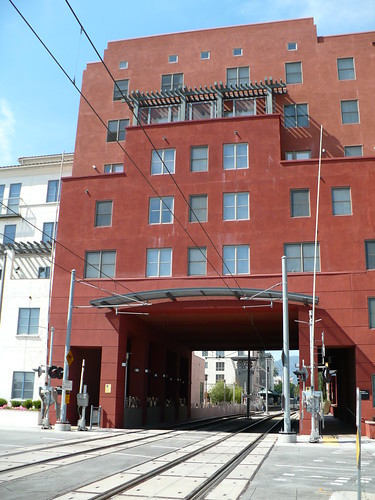
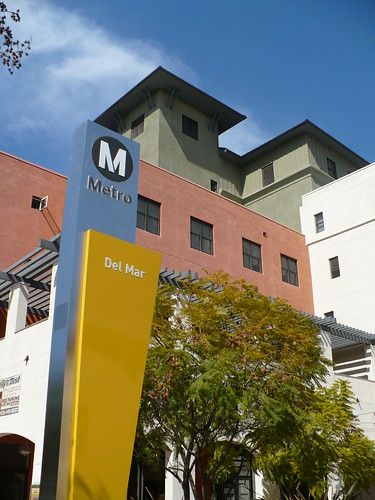
Bike Parking!
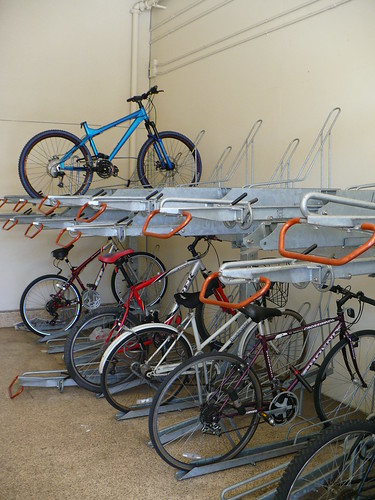
Pasadena Cares about Alternative Transportation and Health
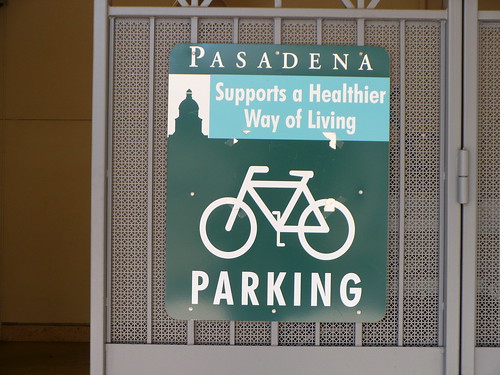

Hot Day at Mission Meridian Station, could have used some Ice Cream from this place:
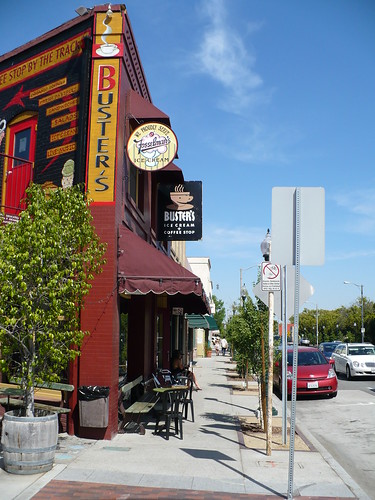
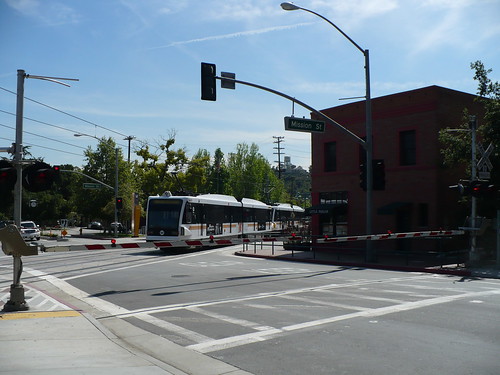
Connectivity to the bus is key...

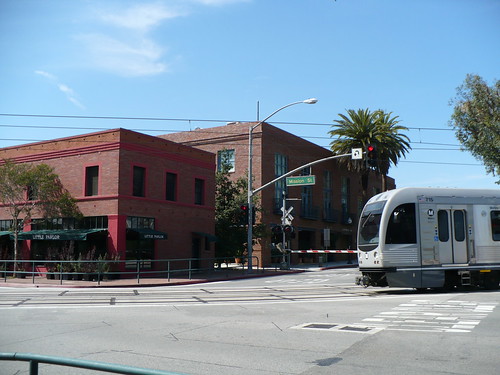
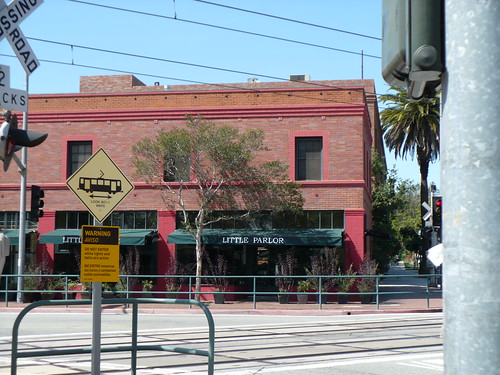
Anyone wonder why they need a subway on Wilshire?

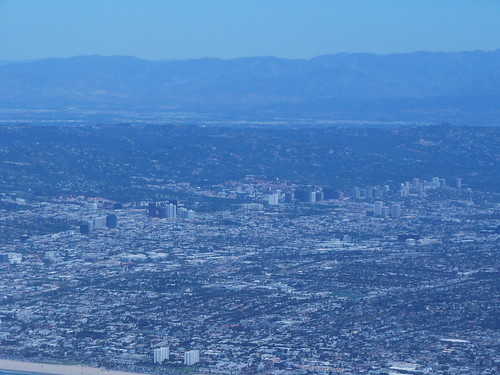
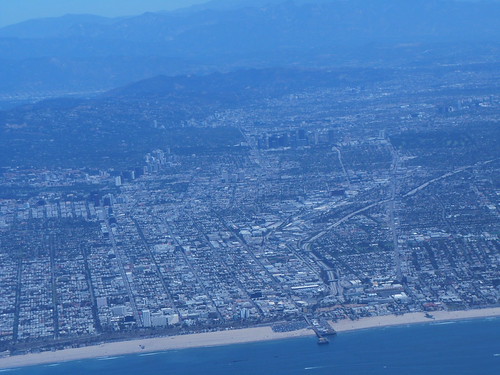
Finally, there are a few videos. Two from Del Mar and one from the Police car that they kept running while they were checking tickets on the Mission Station Platform. What a waste of taxpayer dollars!!!


